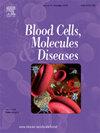研究和阐明红细胞特性及其对输血患者潜在临床影响的方法学策略
IF 1.7
4区 医学
Q3 HEMATOLOGY
引用次数: 0
摘要
输血是一种拯救生命的做法,需要健康的志愿者定期献血。从献血中分离出红细胞(RBC),并以红细胞浓缩液(RCCs)的形式在4°C下储存42至49天,具体取决于储存溶液。自第二次世界大战以来,在这种背景下对红细胞进行了深入研究,并从小分子的鉴定和定量到细胞功能获得了大量数据。很明显,红细胞的性质会受到不同参数的影响,如制造工艺和供体特征。除其他因素外,这些因素可能对输血疗效和临床结果产生重大影响。在第一部分总结了输血链对红细胞和临床结果(从供体到患者)的影响之后,本文将介绍从简单到复杂模型、从体外实验到临床试验的不同策略,以充分表征红细胞的特性。此外,在硅建模将讨论。在分析前条件之外,实验设计可能会影响结果。因此,有必要将红细胞暴露于适合测试假设的条件下,以了解红细胞的行为以优化输血结果。本文章由计算机程序翻译,如有差异,请以英文原文为准。
Methodological strategies to study and elucidate RBC properties and their potential clinical impact on transfused patients
Transfusion is a life-saving practice that requires regular blood donation from healthy volunteers. Red blood cells (RBCs) are isolated from blood donation and stored as RBC concentrates (RCCs) at 4 °C for 42 to 49 days depending on storage solution. RBCs have been intensively studied in this context since World War II and a plethora of data has been obtained from identification and quantification of small molecules to cell function. It has become evident that the RBC properties can be affected by different parameters such as the manufacturing process and donor characteristics. These factors among others may exert a significant influence on transfusion efficacy and clinical outcomes.
After a first part summarizing the impact of the transfusion chain on RBCs and the clinical outcomes (from donors to patients), this review will present different strategies from simple to complex models and from in vitro experiments to clinical trials to fully characterize the properties of RBCs. Furthermore, in silico modeling will be discussed. Beyond pre-analytical conditions, the experimental design might influence the findings. It is therefore essential to expose the RBCs to conditions adapted to the tested hypothesis to understand RBC behavior to optimize the transfusion outcome.
求助全文
通过发布文献求助,成功后即可免费获取论文全文。
去求助
来源期刊
CiteScore
4.90
自引率
0.00%
发文量
42
审稿时长
14 days
期刊介绍:
Blood Cells, Molecules & Diseases emphasizes not only blood cells, but also covers the molecular basis of hematologic disease and studies of the diseases themselves. This is an invaluable resource to all those interested in the study of hematology, cell biology, immunology, and human genetics.

 求助内容:
求助内容: 应助结果提醒方式:
应助结果提醒方式:


